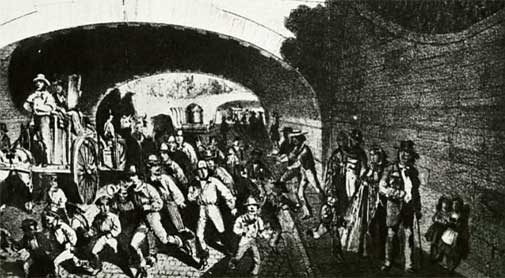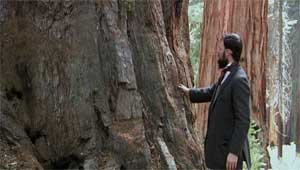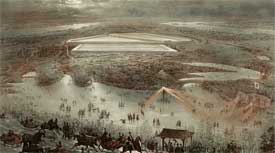
Just in time for Thursday's Earth Day 2011, public television presents two new documentaries devoted to pioneers in the field (so to speak) of public parks and environmental preservation. Monday at 9 p.m. ET, PBS's American Masters unveils a 90-minute biography of Sierra Club founder John Muir -- and beginning Wednesday night on WLIW-21 Long Island (at 7 p.m. ET) and WNET-13 New York (at 10 ET), many local public TV stations are presenting a study of New York's Central Park planner Frederick Law Olmsted...

The Olmsted Legacy: America's Urban Parks is the better of the two. John Muir in the New World relies far too heavily on recreations (right), and only some of those are effective. But both include gorgeous views, which, in a sense, is what these shows are all about.
Muir also was a major figure in 2008's The National Parks: America's Best Idea, by Ken Burns and Dayton Duncan, and both productions returned to the scene of the original majestic lands to prove their point and illustrate their story. The fact that we still have them to photographed, in a timeless pristine state, has everything to do with the dogged efforts of people like Muir, who could walk across swampy marshlands or icy mountains and see beauty everywhere.
Olmsted, profiled in the other documentary, is just as looming a character, but much less of a loner. Both men developed their love for the wilds by repeated trips into the great unknown, but Olmsted, with literary and political connections, leveraged his contacts to give him the power he needed to pursue his dreams of building, rather than merely visiting, gorgeous chunks of nature.

In 1857, at age 35, Olmsted got the go-ahead to help plan Central Park -- a park that, when envisioned, was central to east and west, but was virtually uninhabited to the north. The way he got that approval, and what he and his colleagues did with it, makes for a fascinating story.
It's a story WNET, by the way, has told before, even better, a decade ago, with A Walk Through Central Park with David Hartman and Historian Barry Lewis. But The Olmsted Legacy also deals with Prospect Park in Brooklyn, and many other Olmsted projects. The giant takeaway from both these shows: Whenever you visit a national park, or a city park, you may want to give thanks to Mother Nature, or to some divine being.
But whatever your spiritual beliefs or lack of same, save some thanks for the likes of Muir and Olmsted. Our cities, and our country, wouldn't be the same without them...